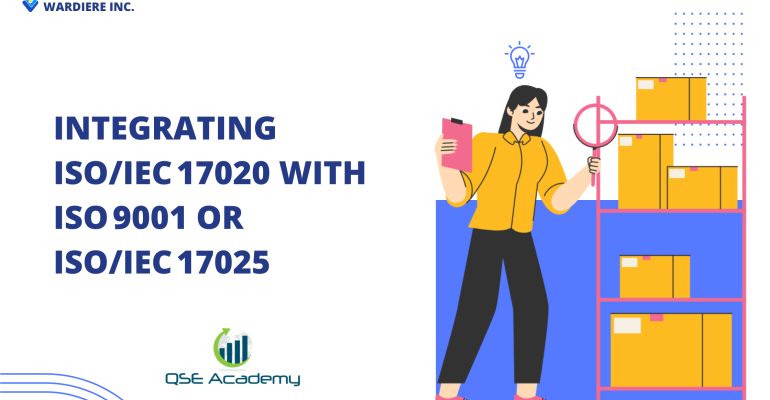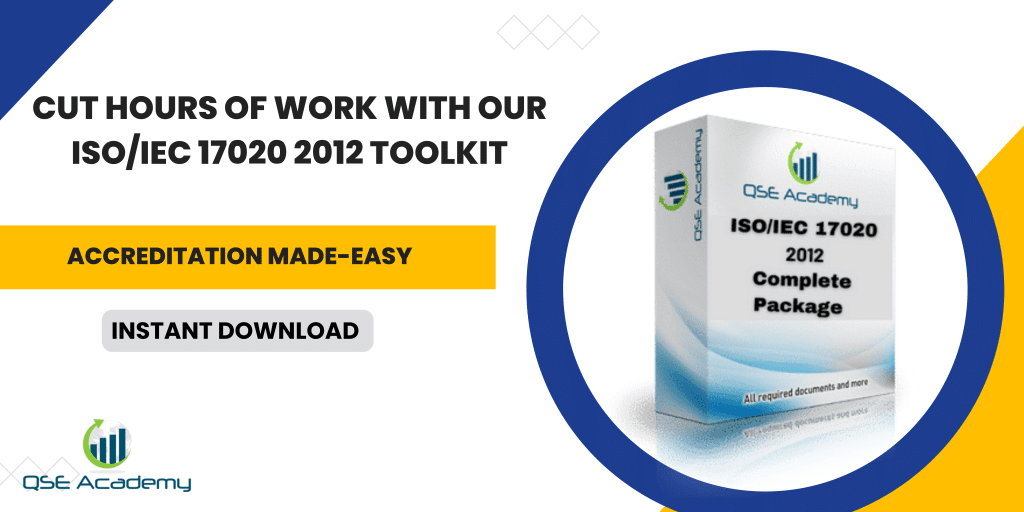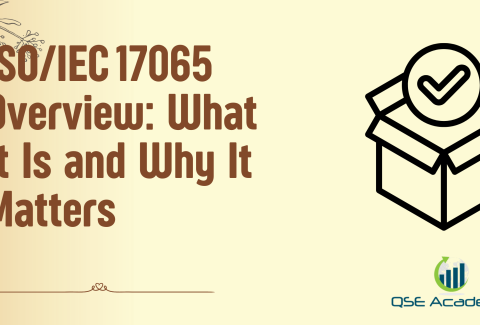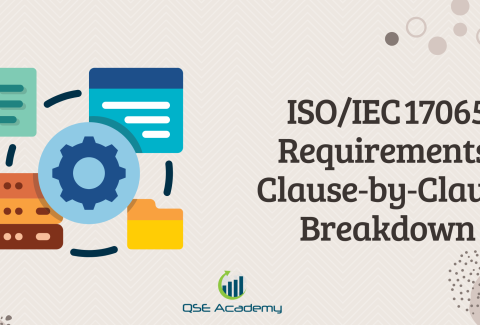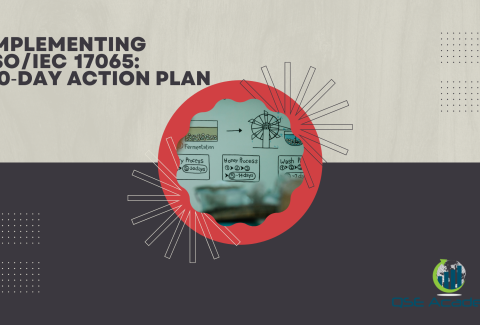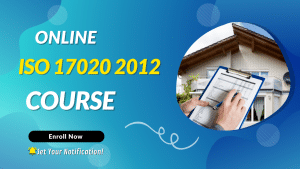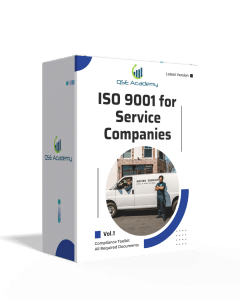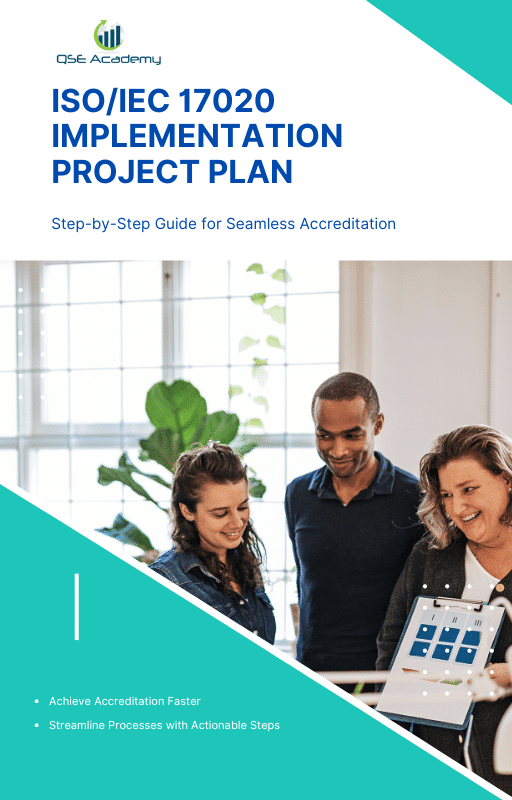Integrating ISO/IEC 17020 with ISO 9001 or ISO/IEC 17025
Last Updated on October 22, 2025 by Hafsa J.
Why Integrating ISO/IEC 17020 with ISO 9001 or ISO/IEC 17025 Matters
If your organization runs inspections, tests, or both, you’ve probably felt the pain of juggling multiple management systems. Separate manuals, duplicated procedures, and different audit checklists — it can feel like managing two companies at once.
Here’s what I’ve noticed after helping dozens of inspection and testing bodies: most of their processes already overlap. The problem isn’t complexity — it’s redundancy. ISO/IEC 17020, ISO 9001, and ISO/IEC 17025 share common principles like competence, impartiality, documentation control, and continual improvement.
Integrating these standards doesn’t mean rewriting everything. It means aligning what already exists into one cohesive system — one that satisfies all requirements without doubling your workload.
In this guide, I’ll walk you through how to:
-
Identify where ISO 17020 overlaps with ISO 9001 or ISO 17025.
-
Combine management system processes without losing compliance.
-
Avoid the common pitfalls that make integration harder than it should be.
By the end, you’ll see that integration isn’t a headache — it’s an opportunity to simplify operations and strengthen your entire quality system.
Why Integrate ISO/IEC 17020 with ISO 9001 or ISO/IEC 17025?
If your inspection body already follows ISO 9001 or ISO/IEC 17025, you’re halfway to meeting ISO/IEC 17020 requirements — even if you don’t realize it. That’s because these standards share the same DNA: they all promote consistency, competence, and continual improvement.
The real question isn’t “Should we integrate?” — it’s “Why run two systems when one can do the job?”
Here’s what integration really delivers:
-
Less duplication. One internal audit, one management review, one document-control process — all satisfying multiple standards at once.
-
Better efficiency. Staff aren’t wasting time updating three different templates for the same process.
-
Stronger compliance. Integrated systems reduce contradictions between departments, especially when inspection and testing work overlap.
-
Easier audits. Combined audits mean fewer disruptions and clearer evidence trails.
One testing lab I worked with had separate ISO 17025 and ISO 17020 systems. After integration, they cut their document count by nearly 40% — and their next audit took two days instead of four.
Pro Tip: Integration doesn’t mean merging everything blindly. It means aligning shared requirements while keeping technical details — like calibration or inspection procedures — distinct and traceable.
When done right, integration turns compliance into a streamlined, well-documented system that works for your team, not against it.
Understanding the Key Differences Between ISO 17020, ISO 9001 & ISO 17025
Before you start merging systems, you need to understand what each standard actually focuses on.
I’ve seen teams try to combine ISO 17020 and ISO 9001 line-by-line — and end up frustrated because they’re solving different problems.
Here’s the simple truth:
All three standards share common ground in quality and consistency, but each has its own lens.
| Standard | Primary Focus | Core Objective | Typical Users |
|---|---|---|---|
| ISO/IEC 17020 | Inspection competence & impartiality | Ensuring inspection outcomes are reliable and independent | Inspection bodies |
| ISO/IEC 17025 | Testing & calibration competence | Ensuring test and calibration results are valid and traceable | Testing & calibration laboratories |
| ISO 9001 | Quality management & customer focus | Driving continual improvement and customer satisfaction | Any organization |
The overlap is clear — they all care about documentation, competence, and continuous improvement — but their intent differs.
ISO 9001 builds a foundation of quality processes.
ISO 17025 adds scientific accuracy and traceability.
ISO 17020 ensures impartiality and reliability in inspection decisions.
Pro Tip: Use ISO 9001 as your management backbone, then layer ISO 17020 and ISO 17025 requirements on top where relevant. This prevents duplication while keeping technical clauses intact.
Common Pitfall: Trying to merge scopes too tightly. Inspection (17020) and testing (17025) often serve different functions — they can share systems, but their technical controls must remain distinct.
Once you see where they differ, integration becomes a matter of alignment, not confusion.
Step-by-Step Approach to Integrating ISO 17020 with ISO 9001 or ISO/IEC 17025
Integration doesn’t happen overnight — but it’s not as complicated as it seems once you break it into clear, manageable steps.
Here’s the same structured process I use when helping inspection bodies merge multiple systems into one seamless framework.
Step 1: Conduct a Gap Analysis
Start by comparing your current system to all applicable standards.
Identify overlapping clauses — like document control, competence, internal audits, and corrective actions.
You’ll quickly see that 60–70% of the requirements are identical or closely aligned.
Pro Tip: Use a correlation matrix that maps each clause of ISO 17020 to the equivalent in ISO 9001 or ISO 17025. It becomes your roadmap for merging.
Step 2: Map Your Processes
Visualize how your organization actually operates — not just how it’s documented.
List your key processes (e.g., inspection, testing, reporting, calibration, document control) and identify where the same steps serve multiple standards.
This is where integration becomes tangible. You’ll realize your “internal audit process” or “management review” can cover all three standards without rewriting them three times.
Step 3: Combine Documentation
Instead of separate procedures for each standard, create unified ones.
For example:
-
One Document Control Procedure covering ISO 9001 clause 7.5, ISO 17020 clause 8.3, and ISO 17025 clause 8.3.
-
One Corrective and Preventive Action Procedure that meets all standards simultaneously.
Keep technical details (like test validation or inspection methods) as annexes — shared processes stay centralized, technical ones stay focused.
Step 4: Unify Internal Audits & Management Reviews
There’s no reason to run separate internal audits or management reviews.
Create a single schedule that evaluates compliance with all applicable clauses.
Pro Tip: Structure your internal audit checklist into two parts — “common clauses” and “standard-specific clauses.” It keeps audits efficient and focused.
Step 5: Implement and Review
Roll out the integrated system with short staff briefings or workshops.
Then monitor how well it performs through your first internal audit cycle. Integration is iterative — refine as you go.
Integration doesn’t mean rewriting your system; it means aligning your existing strengths into one structure that supports every accreditation at once.
Key Clauses That Overlap Across ISO 17020, ISO 9001 & ISO 17025
Once you compare the standards side by side, you’ll notice something interesting — they all speak the same language when it comes to management principles.
They just use slightly different words.
Here are the core clauses that overlap and can be unified in your integrated system:
| Common Clause Area | ISO/IEC 17020 | ISO/IEC 17025 | ISO 9001 | Integration Tip |
|---|---|---|---|---|
| Document Control | 8.3 | 8.3 | 7.5 | Maintain one document-control procedure for all. Cross-reference clause numbers in headers. |
| Competence & Training | 6.1, 6.2 | 6.2 | 7.2 | Use one competence matrix. Link training records and qualifications across roles. |
| Internal Audits | 8.6 | 8.8 | 9.2 | Combine into one internal audit plan covering all standards. |
| Management Review | 8.7 | 8.9 | 9.3 | Conduct a single management review meeting addressing all systems. |
| Corrective Actions | 8.8 | 8.7 | 10.2 | Use a shared CAPA log and root-cause method (like 5 Whys or Ishikawa). |
| Customer Feedback & Improvement | 7.1, 8.4 | 8.6 | 9.1, 10.3 | Centralize feedback collection and analysis into one improvement process. |
The overlap makes integration much easier than most people expect. The structure of each standard supports the same foundation — consistency, traceability, and continuous improvement.
Pro Tip: Keep a cross-reference table handy for audits. It shows assessors how one process fulfills multiple requirements without duplicating documents.
Common Pitfall: Over-documenting. Some teams try to list every clause in every form. Instead, let your process demonstrate compliance — don’t turn your templates into clause catalogs.
The goal is clarity and usability, not clutter.
Managing Documentation in an Integrated System
One of the biggest wins from integration is cutting down documentation clutter.
You don’t need three manuals, three document-control procedures, and three sets of forms to stay compliant — you just need one well-structured system that meets all standards at once.
Here’s how to manage documentation effectively in an integrated environment:
1. Create One Quality Manual or Policy Framework
Your quality manual (or top-level policy) should describe how your organization meets the requirements of ISO 9001, ISO/IEC 17020, and ISO/IEC 17025 collectively.
Instead of repeating text, reference shared processes like “documented information is controlled according to Procedure QP-DC-01.”
Pro Tip: Use cross-references. A simple note like “Complies with ISO 9001:2015 Clause 7.5 and ISO/IEC 17020:2012 Clause 8.3” shows alignment without redundancy.
2. Standardize Procedures and Forms
You can merge overlapping procedures, such as:
-
Document Control
-
Corrective & Preventive Action (CAPA)
-
Internal Audit
-
Management Review
-
Training & Competence
Use one version of each form (e.g., Nonconformity Report, Audit Checklist) and include all applicable standard references.
Common Pitfall: Trying to list every standard on every form. Keep forms functional — they’re tools, not summaries of the standards.
3. Maintain Technical Annexes for Standard-Specific Requirements
Some parts must remain separate — like calibration traceability (ISO 17025) or inspection impartiality (ISO 17020).
Keep these as annexes or sub-procedures within your integrated manual.
That way, your management system stays unified, but your technical controls remain clear and auditable.
Pro Tip: Assign one person to oversee document alignment across standards. In integrated systems, version control errors happen fast — and a single coordinator prevents confusion.
When your documentation is unified and accessible, both staff and assessors can navigate it effortlessly. That’s when your management system starts working for you, not against you.
Training and Awareness in an Integrated Environment
An integrated management system only works if your team actually understands it.
I’ve seen organizations spend months building the perfect documentation, only to have inspectors and lab staff still follow their “old” procedures because no one explained what changed.
Training and awareness bridge that gap. It’s not just about compliance — it’s about building understanding and ownership.
Here’s how to approach it effectively:
1. Train by Role, Not by Standard
Your inspectors, lab analysts, and managers don’t need to memorize ISO clause numbers — they need to know what’s expected of them.
Break training down by roles:
-
Inspectors: impartiality, reporting, recordkeeping, and communication.
-
Lab Staff: calibration, traceability, and test validity.
-
Management & Quality Staff: internal audits, document control, and management reviews.
Pro Tip: Focus on the “why.” When people understand why a process exists, compliance becomes natural — not forced.
2. Cross-Train Where Functions Overlap
If your inspection body also performs testing or calibration, integrate cross-training.
When inspectors understand testing limitations — and lab staff understand inspection requirements — coordination improves and rework decreases.
Example: One client trained inspectors on basic lab reporting rules from ISO 17025. It eliminated 80% of report discrepancies between departments.
3. Build a Training Matrix That Covers All Standards
Combine your competence records into a single matrix.
Each employee should have one row that includes all required skills, training, and authorizations — whether for ISO 9001, ISO 17020, or ISO 17025.
Keep it updated after every internal training, refresher course, or audit corrective action.
4. Keep Awareness Continuous
Integration isn’t a one-time announcement.
Reinforce changes during toolbox talks, audits, or refresher meetings. A quick five-minute discussion on a shared process can do more than a two-hour presentation.
Common Pitfall: Overloading staff with “ISO language.” Speak operationally. Use real examples, not clause numbers.
When your team understands how everything connects, your integrated system runs smoother, faster, and with far fewer mistakes.
Internal Audits and Combined Accreditation Assessments
Once your systems are integrated, your audits should be too. Running three separate internal audits for ISO 9001, ISO/IEC 17020, and ISO/IEC 17025 wastes time and energy — especially when most requirements overlap.
Here’s how to simplify and strengthen your audit process under an integrated framework:
1. Develop One Integrated Audit Plan
Create a single annual audit schedule that covers all applicable standards.
Group similar processes together — for example, you can audit document control, training, and management review once, rather than three times under different standards.
Pro Tip: Divide your audit checklist into two sections:
-
Common Clauses – shared across all standards (e.g., internal audits, corrective actions, document control).
-
Standard-Specific Clauses – unique requirements for inspection or testing (e.g., impartiality for ISO 17020, calibration traceability for ISO 17025).
This keeps your audits structured without losing focus on technical details.
2. Train Auditors on the Integrated Approach
Your internal auditors need to understand how to evaluate shared processes that fulfill multiple standards.
They don’t have to memorize every clause — but they must know how to recognize compliance that satisfies both ISO 9001 and ISO 17020, for instance.
Pro Tip: Have at least one auditor who’s competent in each standard. Together, they can cross-check each other’s findings during integrated audits.
3. Coordinate Combined External Assessments
Many accreditation bodies now allow (and even encourage) combined assessments.
Instead of separate visits for ISO 17020 and ISO 17025, you can request a joint audit, saving time, cost, and staff disruption.
One client I worked with reduced their annual accreditation audit from six days to three by combining their systems. The assessors loved it — everything was easier to trace and cross-reference.
4. Use Audit Results for System-Wide Improvement
Integration means findings in one area can strengthen another.
For example, a documentation issue found during the ISO 9001 audit may also apply to ISO 17020 processes. Address it once, fix it everywhere.
Common Pitfall: Treating integrated audits like three audits stacked together. The goal is consolidation, not expansion. Focus on efficiency and synergy, not repetition.
An integrated audit system saves time, builds consistency, and gives accreditation bodies clear evidence that your organization is organized, aligned, and continually improving.
Common Integration Challenges & How to Avoid Them
Integrating ISO/IEC 17020 with ISO 9001 or ISO/IEC 17025 sounds simple in theory — until you start merging processes and realize just how many moving parts there are. The good news? Most integration problems are predictable and completely avoidable if you plan ahead.
Here are the most common challenges I’ve seen — and how to sidestep them:
1. Overlapping Terminology
Each standard uses slightly different wording for the same concept.
For instance, ISO 9001 talks about “documented information,” while ISO 17020 refers to “records and procedures.”
It’s easy for teams to get confused.
Fix: Standardize your internal language. Choose one term (e.g., “controlled document”) and use it across all procedures. Consistency beats literal clause-matching every time.
2. Over-Integration
Sometimes, in the effort to merge systems, organizations strip away too much detail.
For example, inspection impartiality controls (ISO 17020) are not interchangeable with laboratory measurement traceability (ISO 17025).
Fix: Keep shared processes unified but preserve technical requirements separately — especially where accreditation scopes differ.
3. Unclear Boundaries Between Departments
When inspection and testing activities coexist, confusion about roles can surface. Who reviews reports? Who approves results?
Blurry boundaries can lead to nonconformities during audits.
Fix: Update your organization chart and role descriptions. Make it clear who’s responsible for what — even in integrated processes.
4. Over-Documenting
Some teams think integration means creating longer procedures packed with multiple clause numbers. It only creates clutter.
Fix: Focus on usability. Your documents should make sense to the people using them, not just to auditors. Keep them short, clear, and operational.
5. Lack of Staff Involvement
The biggest integration mistake I see? Leadership builds the system in isolation. Then staff resist it because they never had input.
Fix: Involve key users early. Let inspectors, lab analysts, and quality staff help shape the integrated processes. People support what they help create.
Integration isn’t about combining standards — it’s about combining thinking.
When you align people, language, and processes, the system becomes smoother, lighter, and much easier to maintain long-term.
FAQs – Common Questions About ISO Integration
Q1: Can we maintain ISO/IEC 17020 and ISO 9001 certifications under one management system?
Absolutely. Many inspection bodies successfully operate a single management system that meets both standards.
The key is clear cross-referencing — one process for document control, internal audits, or management reviews can fulfill the requirements of multiple standards if it’s structured properly.
Pro Tip: During external audits, show a clause-correlation matrix. It helps assessors see at a glance how your shared processes meet each requirement.
Q2: Will integrating ISO 17020 with ISO 17025 affect impartiality?
Not if it’s managed correctly. Impartiality is a core principle of ISO 17020, and as long as your roles, responsibilities, and conflict-of-interest safeguards remain clear, integration actually strengthens impartiality.
It eliminates silos that can cause confusion or duplication in review processes.
Example: A combined inspection and testing company can maintain separate review authorities while sharing one document-control system.
Q3: How long does full integration take?
It depends on your starting point.
If your systems are already mature and well-documented, integration might take 3–4 months.
If you’re still developing procedures or have inconsistent documentation, plan for 6–9 months.
Pro Tip: Don’t rush integration before your next audit. It’s better to align slowly and accurately than to rush and create inconsistencies.
Q4: Do we need new certifications after integration?
No. Integration doesn’t change your certification or accreditation scope — it simply aligns your internal systems. Your certification bodies will still issue certificates for each standard, but under one unified management system.
Integrating standards can sound daunting, but once you see how much overlap exists, it becomes a logical exercise — not a reinvention.
Simplify Compliance Through Integration
Integrating ISO/IEC 17020 with ISO 9001 or ISO/IEC 17025 isn’t about making your system more complicated — it’s about making it work smarter.
When your quality, inspection, and testing processes align under one management system, everything becomes easier to manage, track, and improve.
In my experience, integrated systems deliver three big advantages:
-
Clarity – Everyone knows which process applies and who’s responsible.
-
Efficiency – Shared procedures reduce duplication and confusion.
-
Audit Confidence – Combined evidence shows assessors that your system is strong, consistent, and well-controlled.
The organizations that thrive under integration don’t just chase compliance — they use it as a framework for continuous improvement. Every shared process, every combined review, and every integrated audit brings your team one step closer to operational excellence.
Final Thought: Integration isn’t about merging standards — it’s about merging mindsets. When your team understands how everything connects, compliance becomes effortless and improvement becomes automatic.
Next Step:
Download the ISO 17020 Integration Mapping Tool or reach out to QSE Academy for expert support in aligning ISO/IEC 17020 with ISO 9001 or ISO/IEC 17025 — without the extra complexity.
Because the best systems aren’t the most documented — they’re the most connected.
I hold a Master’s degree in Quality Management, and I’ve built my career specializing in the ISO/IEC 17000 series standards, including ISO/IEC 17025, ISO 15189, ISO/IEC 17020, and ISO/IEC 17065. My background includes hands-on experience in accreditation preparation, documentation development, and internal auditing for laboratories and certification bodies. I’ve worked closely with teams in testing, calibration, inspection, and medical laboratories, helping them achieve and maintain compliance with international accreditation requirements. I’ve also received professional training in internal audits for ISO/IEC 17025 and ISO 15189, with practical involvement in managing nonconformities, improving quality systems, and aligning operations with standard requirements. At QSE Academy, I contribute technical content that turns complex accreditation standards into practical, step-by-step guidance for labs and assessors around the world. I’m passionate about supporting quality-driven organizations and making the path to accreditation clear, structured, and achievable.

